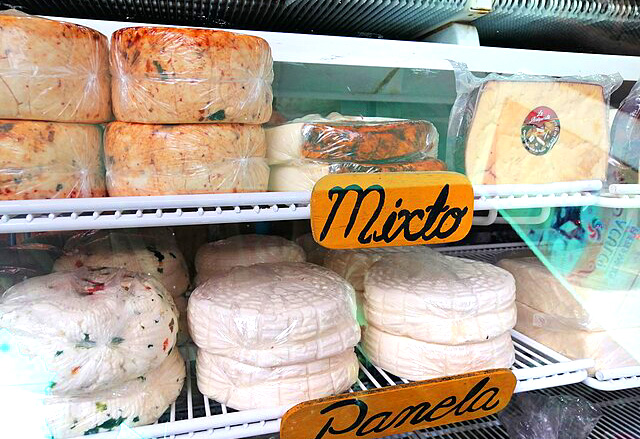


Wherever you see herds of dairy cattle dotting the Mexican landscape you can assume that local mercados sell some interesting cheeses -- quesos in Spanish. As you might expect, these cheeses come in endless variations, have unique local names, and derive their identities from the particular strain of bacterium used during the cheese making process, race of cow or goat producing the milk, butter-fat content of milk used, length of aging time, salt content, flavoring and dyes used, manner of molding or cutting, packaging and displaying, etc.
In mercados, cheeses of the white, homemade kind are called casero, based on the Spanish word for house, casa. One problem with casero cheeses is that one never knows whether the cows producing the milk from which the cheese has been made have been adequately screened for diseases -- especially brucellosis. Typically I just admire Mexican cheeses unless it's clear that someone has done a good job managing quality control, from cow to cheese-counter.

Just to hint at Mexican cheese diversity, it's worthwhile mentioning Baja California's chopito and de apoyo cheeses, which are so dry and crumbly that they are favored as grated toppings for tacos and beans. In north-central Mexico there exists a famous goat-cheese called cuajada, and a cheese fermented inside a gourd, called queso guaje. Villa Ahumada, Chihuahua has an excellent cheese called asadero. In Tabasco, some cheeses are wrapped and marketed in banana leaves.